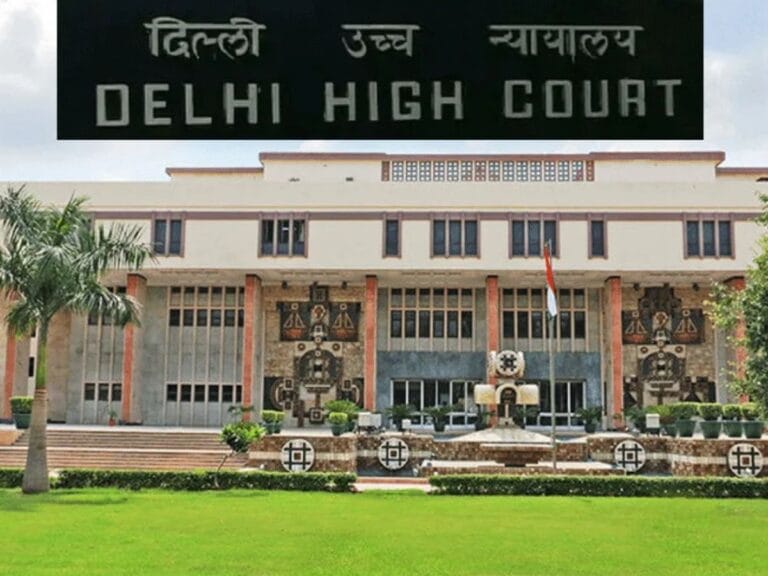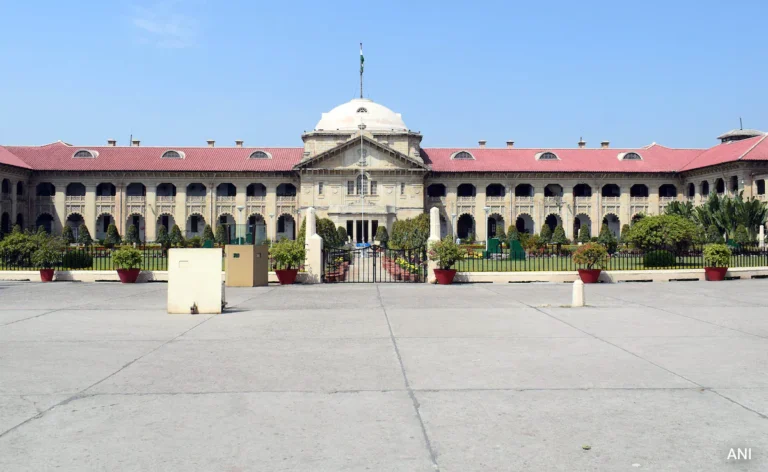
Chhattisgarh High Court Upholds FIR Against Professors in Forced Namaz Case at NSS Camp
On the afternoon of June 8, 2025, a gang of young Gurjars came upon the Peelupura section near Bharatpur and brought the popular rail corridor that connects Delhi and Mumbai to a complete halt.
Following a large-scale mahapanchayat that was called by the Gurjar Aarakshan Sangharsh Samiti, a number of protesters climbed onto the tracks at approximately 4:30 p.m., uprooted fishplates, and snapped rails, which resulted in the delay of at least a dozen long-distance trains, including the Avadh Express and the Saugor–Nizamuddin Express, for more than two hours.
The demonstration took place in spite of the fact that the government of Rajasthan had just reached an agreement to examine the possibility of introducing a quota of five percent for the Most Backward Classes into the Ninth Schedule of the Constitution.
For any queries or to publish an article or post or advertisement on our platform, do call at +91 6377460764 or email us at contact@legalmaestros.com.
The resolution that was passed by the mahapanchayat looked to meet the concerns of the community elders; nevertheless, a group of dissatisfied teenagers opted to reject the compromise and instead take direct action on the train line. This choice highlights the fundamental fractures that exist within the Gurjar movement about strategy and faith in official guarantees.
In order to restore service and safeguard the lines, the authorities in charge of the railways moved quickly to send officers from the Railway Protection Force in conjunction with local police.
Anyone who obstructs or attempts to impede the running of a train by tampering with infrastructure, picketing, squatting, or any other means is subject to a fine, a jail sentence of up to two years, or both, according to Section 174(a) of the Indian Railways Act.
For any queries or to publish an article or post or advertisement on our platform, do call at +91 6377460764 or email us at contact@legalmaestros.com.
The statute’s unequivocal ban against putting train operations in jeopardy allows limited space for protest-related exclusions in situations when public safety and key infrastructure are put in jeopardy.
Besides the Railway Act, the acts of the protestors might potentially result in charges being brought against them under the Indian Penal Code for public annoyance and other offenses pertaining to the same category.
In accordance with Section 268, the purposeful blockage of a public service is considered to be a nuisance, and Section 290 outlines the sanctions that are applicable to such behavior.
For any queries or to publish an article or post or advertisement on our platform, do call at +91 6377460764 or email us at contact@legalmaestros.com.
For More Updates & Regular notes, Join Our WhatsApp group (https://chat.whatsapp.com/DkucckgAEJbCtXwXr2yIt0) and Telegram Group ( https://t.me/legalmaestroeducators )
In addition, the Indian Penal Code (IPC) has sections 336 and 427, which cover the offenses of doing mischief that causes damage and risking life or personal safety via reckless conduct, respectively.
This set of regulations establishes a multi-tiered legal structure with the purpose of discouraging violations that put passengers in danger and disrupt commercial activity.
For any queries or to publish an article or post or advertisement on our platform, do call at +91 6377460764 or email us at contact@legalmaestros.com.
At the Bharatpur police station, a First Information Report has been filed against individuals who participated in the demonstration but have not been identified.
The report invokes Section 174 of the Railways Act in addition to Sections 336 and 427 of the Interstate Police Code.
Evidence is being gathered by investigators through the use of surveillance film from neighboring stations, feeds from highway cameras, and pictures captured by drones in order to trace the amount of track damage. Additionally, personnel of the railway company as well as witnesses have been called in to provide testimony regarding the instruments that were utilized and the sequence of events that precipitated the stoppage.
For any queries or to publish an article or post or advertisement on our platform, do call at +91 6377460764 or email us at contact@legalmaestros.com.
In the event that persons are seized and put on trial, they are not only subject to the possibility of doing time in jail or paying fines, but they also face the possibility of being disqualified from participation in elections under the Representation of the People Act of 1951 if they are sentenced to two years or more of imprisonment.
It is possible for a criminal conviction for mischief or public annoyance to have lifetime collateral implications, which can have an impact on economic opportunities, political aspirations, and social status.
In India, the precedent of the judiciary has shown that there is very little tolerance for train blockades, even when they are part of very nonviolent campaigns. The convictions of protesters who prevented trains from moving or destroyed tracks during protests have been frequently upheld by high courts.
For any queries or to publish an article or post or advertisement on our platform, do call at +91 6377460764 or email us at contact@legalmaestros.com.
This serves to emphasize that the freedom to dissent does not extend to putting people’s lives in danger or preventing important services from being provided. In situations where public order and safety are at issue, such verdicts highlight the importance of a stringent interpretation of these legislation.
As the roadblock moved forward, politicians hurried to offer their opinions. A statement was released by the Chief Minister of Rajasthan, in which he expressed sorrow about “unfortunate disruptions” and reaffirmed the government’s resolve to honor reservation pledges.
Following the event, leaders of the opposition took advantage of it to accuse the administration of taking half-measures and failing to connect meaningfully with Gurjar leaders at the grassroots level. While this was going on, activists for civil rights warned against harsh penalties and urged authorities to make a distinction between peaceful opposition and criminal sabotage.
For any queries or to publish an article or post or advertisement on our platform, do call at +91 6377460764 or email us at contact@legalmaestros.com.
A significant amount of money and resources were lost due to the railway’s operations. There was a disruption of dozens of worker shifts, the need for immediate expenditures to restore the track, and the accumulation of passenger compensation liabilities.
Enhanced perimeter fencing along dangerous areas has been requested by zonal railway heads, according to internal memoranda. Additionally, rapid-response track-clearing crews that are ready to quickly defuse such obstructions have also been advocated.
Those passengers who were unable to leave platforms expressed their dissatisfaction and worry. Another traveler related that they saw sparks flare as young people pounded metal plates with homemade hammers, while another commuter related that they had to wait for three hours without receiving any clear information or refreshments.
For any queries or to publish an article or post or advertisement on our platform, do call at +91 6377460764 or email us at contact@legalmaestros.com.
In the larger discussion about striking a balance between the rights to protest and the safety and convenience of regular travelers, these personal experiences added an emotional dimension to the subject matter.
When viewed from the Gurjar point of view, the blockade was portrayed as a desperate measure that they had no other choice than to use. Younger activists contended that repeated guarantees had not resulted in any visible progress about the MBC reserve, and they insisted that only overt pressure would force serious debate to take place.
Elders of the community, on the other hand, requested that prudence be used and warned that legal implications may destroy the legitimacy of the movement.
For any queries or to publish an article or post or advertisement on our platform, do call at +91 6377460764 or email us at contact@legalmaestros.com.
When night fell and the remaining protestors were convinced by the police to leave the lines, repair teams rushed to straighten the rails and clean the debris, which made it possible for the first express trains that had been delayed to begin their service before daybreak.
In the next weeks, the courts of Rajasthan will be asked to decide on the violation of the Railways Act and the crimes under the Indian Penal Code. They will do so by comparing the political intentions of the protestors against the obvious legislative imperatives that preserve key infrastructure.
As a result, the Gurjar blockade of the Delhi–Mumbai rail route serves as a striking example of the clash that occurs between constitutional protest rights and legislation that are designed to protect public order. Not only will the manner in which the judiciary handles this tension determine the course of future Gurjar agitation, but it will also establish a precedent for the permitted bounds of civil disobedience on India’s key transportation networks.
For any queries or to publish an article or post or advertisement on our platform, do call at +91 6377460764 or email us at contact@legalmaestros.com.




![Research Assistantship @ Sahibnoor Singh Sindhu, [Remote; Stipend of Rs. 7.5k; Dec 2025 & Jan 2026]: Apply by Nov 14, 2025!](https://legalmaestros.com/wp-content/uploads/2025/11/Gemini_Generated_Image_s0k4u6s0k4u6s0k4-768x707.png)
![Karanjawala & Co Hiring Freshers for Legal Counsel [Immediate Joining; Full Time Position in Delhi]: Apply Now!](https://legalmaestros.com/wp-content/uploads/2025/11/Gemini_Generated_Image_52f8mg52f8mg52f8-768x711.png)
![Part-Time Legal Associate / Legal Intern @ Juris at Work [Remote]: Apply Now!](https://legalmaestros.com/wp-content/uploads/2025/11/ChatGPT-Image-Nov-12-2025-08_08_41-PM-768x768.png)
![JOB POST: Legal Content Manager at Lawctopus [3-7 Years PQE; Salary Upto Rs. 70k; Remote]: Rolling Applications!](https://legalmaestros.com/wp-content/uploads/2025/11/ChatGPT-Image-Nov-12-2025-08_01_56-PM-768x768.png)